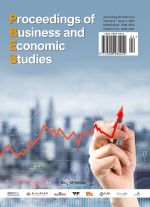Abstract
Under the background of this era, green finance and the upgrading and optimization of industrial structure have become a hot research topic. The article focuses on Jiangsu Province, carefully explores the impact of green financial development on the upgrading and optimization of industrial structure and the real effect, collates and summarizes the theories of green finance and industrial structure at home and abroad, and carefully analyzes the development of green finance in Jiangsu Province, such as the gradual expansion of green credit scale, the characteristics of industrial structure, the change of the proportion of three industries, the development situation of emerging industries and so on. By means of econometrics, an empirical model covering Green Financial Development Indicators and industrial structure optimization indicators is established to do multiple linear regression analysis and stability test. The empirical results show that the development of green finance in Jiangsu plays an obvious positive role in the optimization and upgrading of industrial structure. Green finance is environmental protection, new energy and other green industries are given important financial support, which drives their scale expansion and technological innovation, and makes the industrial structure develop towards a higher level and a more reasonable direction. From this point of view, corresponding proposals are put forward to improve the policy incentive system, add green financial products, and strengthen the construction of green financial market. The purpose is to give better play to the advantages of green finance, accelerate the optimization and upgrading of industrial structure in Jiangsu, and provide theoretical basis and practical guidance for achieving green economic transformation and sustainable development.
References
Zhou X, Tang X, 2022, Spatiotemporal Consistency Effect of Green Finance on Pollution Emissions and Its Geographic Attenuation Process. Journal of Environmental Management, 318: 115537.
Huang Y, Chen C, Lei L, et al., 2022, Impacts of Green Finance on Green Innovation: A Spatial and Nonlinear Perspective. Journal of Cleaner Production, 365: 132548.
Heo S, Lee H, 2019, Evolution of the Linkage Structure of ICT Industry and Its Role in the Economic System: The Case of Korea. Information Technology for Development, 25(3): 424–454.
Cantner U, Graf H, 2004, The Network of Innovators in Jena: An Application of Social Network Analysis. Research Policy, 35(4): 463–480.
Kratke S, 2010, Regional Knowledge Networks: A Network Analysis Approach to the Interlinking of Knowledge Resources. European Urban and Regional Studies, 17(1): 83–97.
Lee C, Wang F, Chang F, 2023, Does Green Finance Promote Renewable Energy? Evidence from China. Resources Policy, 82: 103439.
Palencia J, Furubayashi T, Nakata T, 2013, Analysis of CO₂ Emissions Reduction Potential in Secondary Production and Semi-Fabrication of Non-Ferrous Metals. Energy Policy, 52: 328–341.
Peneder M, 2003, Industrial Structure and Aggregate Growth. Structural Change and Economic Dynamics, 14(4): 427–448.
Hellmann T, Murdock K, Stiglitz J, 1995, Financial Restraint: Toward a New Paradigm. Oxford University Press, 9(3): 61–64.
Lv C, Bian C, Lee C, et al., 2021, Regional Gap and the Trend of Green Finance Development in China. Energy Economics, 2021(10): 105476.
